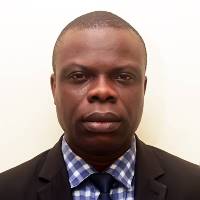 |
Prof. Dr. Omotosho Temidayo Victor
Covenant University, Ota, Nigeria |
Presentation Title:
Recent Advances in Radio Wave Propagation and Its Application |
Abstract:
In recent years, advances in Radiowave propagation and its applications have enabled spaceborne radars to provide an unprecedented 3D view of atmospheric components. Existing and planned spaceborne missions provide valuable information about the earth's climates over the oceans, land, and difficult remote areas. A careful look at their measurement capabilities will be a part of the discussion and will focus on how to best utilize recent advances in radio wave propagation such as microwave imagers, radar, and space-borne platforms and technologies, as well as addressing outstanding sensors. The first section of the presentation will focus on the observing capabilities and measurement highlights of existing spaceborne satellite missions such as Landsat, TRMM, GPM, GEOS-SAT, AIRS, and TOM satellites, etc. After that, the application of spaceborne satellites and validation with ground data in monitoring climate change will be discussed. Data can be used in agriculture, renewable energy, GIS, and modeling different types of radio communications. Finally, the potential applications and future research avenues can be explored. The purpose of this presentation is to raise awareness about existing spaceborne data, applications, and uses in scientific, engineering, and interdisciplinary research, engaging researchers, undergraduates, and postgraduate students at all levels in the new generation of Earth-observing satellites. |
Short Biography:
Professor Omotosho Temidayo Victor received Ph.D. (Radio & Satellite Communication) at Covenant University, a Master of Technology in Physics (Radio & Satellite Communication), and a Bachelor of Technology (Electronics) in Physics from the Federal University of Technology Akure, Ondo State Nigeria, in 2008, 2003 and 1997 respectively. Experienced and former Dean of the College of Science and Technology and Head of the Department of Physics Covenant University Ota Ogun State Nigeria. He has 24 years of university research, teaching, and 10 years of administrative experience. Skilled in research and development, curriculum development, and mentoring of students. Proven ability to manage faculty, coordinate events, and coordinate with other departments. He is the current Head of the Applied physics research Cluster. He has a wealth of experience using in-situ, satellite, and meteorological observation data. His works have been published in high-impact journals and presented at many conferences on the effect of different types of propagation impairment on millimeter and microwave signals, Ionospheric physics, satellite remote sensing, Ozone variability, Air quality, Climatic parameters, and Climate change. |
|